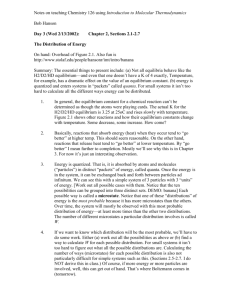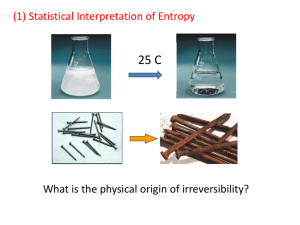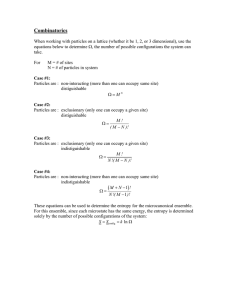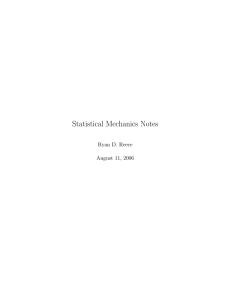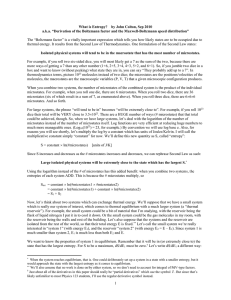Summary: Number of States and Probabilities a) Notation
advertisement
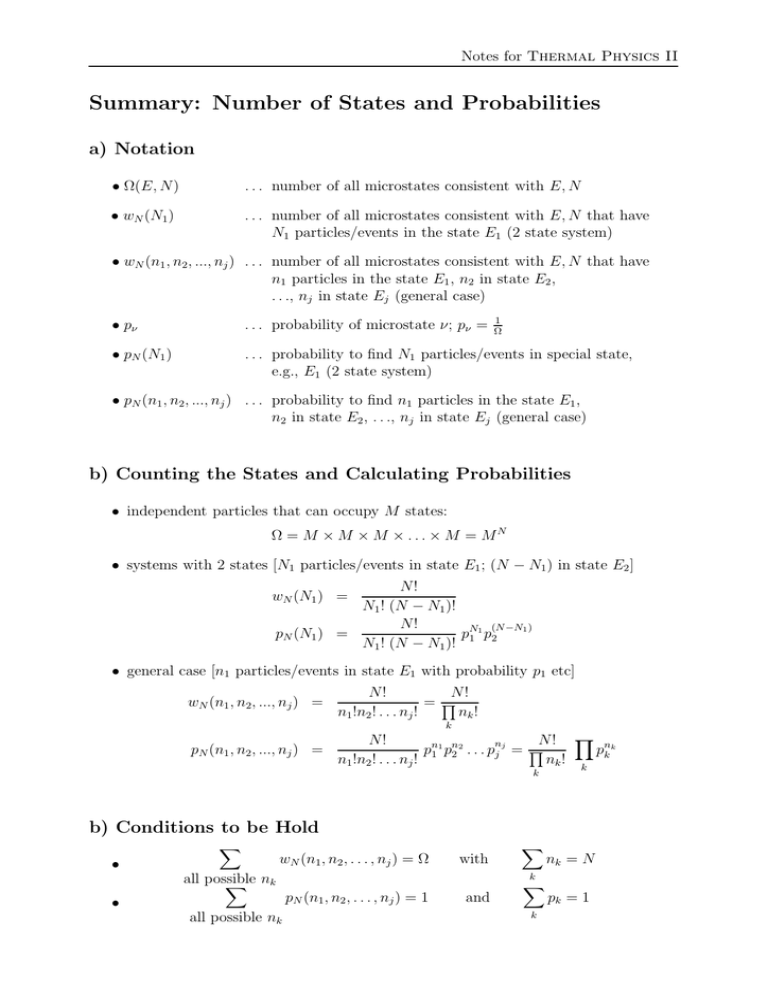
Notes for Thermal Physics II Summary: Number of States and Probabilities a) Notation • Ω(E, N) . . . number of all microstates consistent with E, N • wN (N1 ) . . . number of all microstates consistent with E, N that have N1 particles/events in the state E1 (2 state system) • wN (n1 , n2 , ..., nj ) . . . number of all microstates consistent with E, N that have n1 particles in the state E1 , n2 in state E2 , . . ., nj in state Ej (general case) 1 Ω • pν . . . probability of microstate ν; pν = • pN (N1 ) . . . probability to find N1 particles/events in special state, e.g., E1 (2 state system) • pN (n1 , n2 , ..., nj ) . . . probability to find n1 particles in the state E1 , n2 in state E2 , . . ., nj in state Ej (general case) b) Counting the States and Calculating Probabilities • independent particles that can occupy M states: Ω = M × M × M × . . . × M = MN • systems with 2 states [N1 particles/events in state E1 ; (N − N1 ) in state E2 ] N! N1 ! (N − N1 )! N! 1 (N −N1 ) pN pN (N1 ) = 1 p2 N1 ! (N − N1 )! wN (N1 ) = • general case [n1 particles/events in state E1 with probability p1 etc] wN (n1 , n2 , ..., nj ) = N! N! =Q nk ! n1 !n2 ! . . . nj ! k N! N! Y nk n pN (n1 , n2 , ..., nj ) = p pn1 1 pn2 2 . . . pj j = Q n1 !n2 ! . . . nj ! nk ! k k k b) Conditions to be Hold • • X wN (n1 , n2 , . . . , nj ) = Ω all possible X nk all possible nk with X and X nk = N k pN (n1 , n2 , . . . , nj ) = 1 k pk = 1


